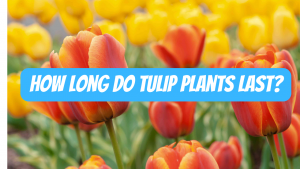Defination
A tulip bulb is an underground storage organ that contains the nutrients needed to grow a tulip flower. It serves as the starting point for the plant, typically planted in the fall and blooming in the spring. Tulip bulbs have a rounded, layered structure, resembling an onion, and are packed with energy to support the initial stages of growth. Proper planting of tulip bulbs requires selecting a good location, ensuring well-draining soil, and planting them at the correct depth. These bulbs are sensitive to temperature changes and thrive in cooler climates, producing vibrant flowers that are popular in gardens worldwide.
KEY TAKEAWAYS
Tulip bulbs should be planted in the fall for spring blooms.
Use well-draining soil to prevent bulb rot.
Plant bulbs at a depth of 6-8 inches for optimal growth.Ensure proper spacing between bulbs to allow healthy development
.Regular watering is needed, but avoid Over watering to protect the bulbs.
Tulip bulbs can be stored and reused for future seasons.Tulips thrive in cooler climates and require a cold period to bloom effectively.
How to plant tulip bulbs
Tulip plants are known for their beautiful and colorful flowers, which can become the center of attraction in any garden. But to grow these flowers, it is important to follow the right information and method. In this article, we will tell you in detail how to plant tulip bulbs.
Importance of tulip plant
Tulip flowers are not only famous for their amazing colors and shape, but they also bring beauty and peace to the garden. Their flowers bloom first in the spring season, spreading a colorful aura in the garden.
When to plant tulip bulbs?
Choosing the right time
The best time to plant tulip bulbs is autumn (October-November). At this time the soil is cool and the bulb gets enough time to set roots.
Weather information
Tulip bulbs require cold weather, so it is better to plant them in cold climates. The bulb needs rest in winter so that it can bloom at the right time.
Materials required for planting tulip bulbs
Equipment required
-Shovel or shovel
-Fertilizer
-Pots (if there is no garden space)
-Fertilizer and soil type
-Granular fertilizer and light, draining soil are best suited for tulip bulbs. You can also use organic manure to nourish the soil.
How to choose tulip bulbs
-Identifying healthy bulbs
-When buying bulbs, make sure that the bulbs are strong, hard and without any damage or fungus. The healthier the bulb, the better the plant will be.
Bulb size and quality
-Choose large and healthy bulbs, as large bulbs produce large and beautiful flowers. Small bulbs also produce flowers, but they are not as impressive.
Preparing to plant tulip bulbs
-Preparing the soil
-Add sand and organic manure to the soil to make it light and friable. This will provide nutrition to the bulb for good growth.
Adding fertilizer
-Before planting the bulbs, it is important to add some fertilizer to the soil so that the bulbs get the required nutrition during growth.
Method of Planting Tulip Bulbs
-Bulb Depth and Spacing
Plant the tulip bulbs 6 to 8 inches deep in the soil and keep a distance of 4 to 6 inches between each bulb. Place the bulbs root side down.
Watering
Water the soil well after planting the bulbs, so that the bulbs can take root properly.
Caring for Tulip Plants
-Regular Watering
Tulips do not require a lot of water, but watering is necessary for the first few weeks after planting the bulbs.
Mulching and Mulching
Put mulch around the tulip plants to protect them from the cold in winter. This retains moisture and protects the plants from the cold.
Tulip Plant Diseases and Solutions
Pest Control
Tulip plants can be commonly affected by insects and pests, for this use organic pesticides.
Common diseases and their solutions
Tulip bulbs can be affected by diseases such as fungus and rot. Inspect the plants from time to time and take quick action if problems arise.
Monitoring the growth of tulip plants
Growth stages
Tulip plants have different stages of growth, which you can observe from time to time. The plants gradually establish roots and then flower.
Flowering time
Tulip flowers bloom in the spring season. If you have planted the bulbs at the right time, you will enjoy colorful flowers in the spring.
Harvesting and flower care
Preserving flowers
When the flowers are fully bloomed, they can be cut and used in home decoration. Even after cutting, tulip flowers remain fresh for many days.
Maintaining the freshness of flowers
To maintain the freshness of flowers, keep them in cold water and keep changing the water from time to time.
Reusing Tulip Plants
Reusing Bulbs
If you want to replant tulip bulbs, remove them in summer and store them in a cool and dry place.
Digging and Storing Bulbs
After the flowers have fallen, remove the bulbs and store them until the next season for replanting.
Benefits of Planting Tulip Bulbs
Additional Beauty
The beautiful flowers of tulips add beauty and variety of colors to the garden. They make any garden or pot attractive.
Beneficial for the Environment
Tulips not only add beauty, but are also beneficial for the environment. They help in improving air quality.
Mistakes to Avoid While Planting Tulip Bulbs
Planting the Bulbs Too Deep
Do not plant the bulbs too deep, as this may slow down their growth and may not lead to flowering.
Wrong Soil Selection
Choose light and nutritious soil for tulips. Avoid heavy and water-logged soil, as this may cause the bulbs to rot.




